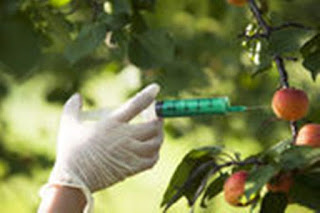Plants are, essentially, normal labs in which various chemicals are biosynthesized. Numerous plants have created natural, biochemical components to guard themselves from weed competition and animal, bug and fungal attacks. Some of these chemicals debilitate encouraging by bugs and different herbivores. Others give security or even resistance from sicknesses brought about by a few pathogens. Still others help plants compete for resources by debilitating competition among various plant species. By concentrating on the various sciences of a wide range of plant species, researchers have found numerous helpful intensifies that can be utilized as bio pesticide.
Plant extracts have long been utilized to control bugs. The main plant bug spray goes back to the seventeenth century, when it was demonstrated that nicotine from tobacco leaves killed plum insects. Today, there are various biopesticide plant extracts being advertised as bug sprays. These items divided into a few unique classes:
Creepy crawly Growth Regulators
Plant extracts that keep creepy crawlies from achieving the conceptive stage.
Feeding Deterrents
A compound that, once ingested by the insect pest, causes it is to quit feeding and eventually to starve to death. Crop harm is repressed and the creepy crawly in the long run starves to death.
Anti-agents
Commonly compounds which discharge smells that are unappealing or chafing to bugs. Illustrations incorporate garlic or pepper-based bug sprays.
Confusants
Compounds are utilized as traps or imitations to draw harming bugs far from yields. Confusants can also be formulated as concentrated splashes intended to overpower creepy crawlies with such a large number of sources of boosts that they can't find the yield.
Not just are plant extracts utilized specifically as bug sprays, yet they are utilized additionally as a source for synthetic bug sprays based on analogs created in the lab. Researchers have changed particles observed in plants to be more poisonous or more determined. Normal examples of this can be found in the parathyroid and neonicitinoid groups of bug sprays, got from particles segregated from plants like pyrethrum (T. cinerariifolium) and tobacco.
Plant extracts can also be utilized as bio herbicides, and depend on a few distinct methods of activity:
Plant Allelopathy
A term used to depict the biochemical connection that hinders the development of neighboring plants by another plant. Dark walnut trees (Juglans nigra), for instance, create the allelochemical jug lone, which is dangerous to numerous different plants. Recently numerous found allelochemicals have potential for development as natural item herbicides.
Plant Growth Regulation
Some plant oils can act as successful contact herbicides through an assortment of instruments, for example, upsetting cell layers in plant tissue, inhibiting amino acid synthesis, or blocking generation of enzymes necessary for photosynthesis.
Mechanical Control
Some plant extracts are intense natural agents which act straightforwardly on weeds. D-limonene, for instance, is a powerful degreasing agent which strips the waxy fingernail skin from weed leaves, bringing on rot, lack of hydration and weed demise.
Plant extracts are additionally utilized as a part of business horticulture as fungicides and anti-microbial instruments in food security applications. They depend on the accompanying methods of activity:
Fungicidal Control
Some plant extracts work as contact fungicides. Some upset cell film trustworthiness at various phases of fungal advancement, while others inactivate key enzymes and interfere with metabolic procedures.
Incited Resistance
Crops treated with some plant removes deliver and amass raised levels of particular proteins and different mixes which inhibit the improvement of fungal and bacterial illnesses. In actuality, the harvest's resistant framework is activated to defend against ruinous infections.
Utilizing plant extracts as bio pesticide offers cultivators numerous unique advantages. Generally, plant-based compounds corrupt quickly, diminishing the danger of buildups on food. A large portion of these items have short pre-harvest interims. Most items show wide windows of product wellbeing and imperviousness to these compounds is not created as fast as with manufactured pesticides because of different methods of activity. Numerous plant extracts utilized as bug sprays are quick acting, rapidly restraining bug feeding and extra crop damage. And, because they follow up on the bug's gut and quickly break down in the earth, numerous plants extracts bug sprays are more specific to insect targets and more secure to beneficial bugs.

Comments
Post a Comment